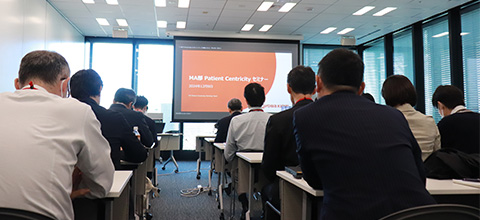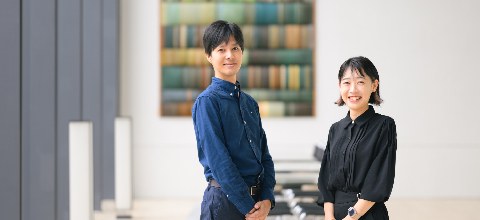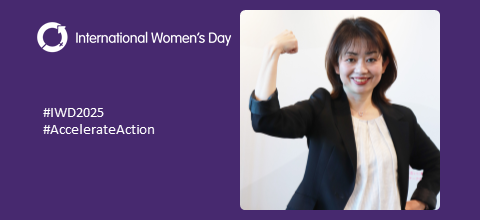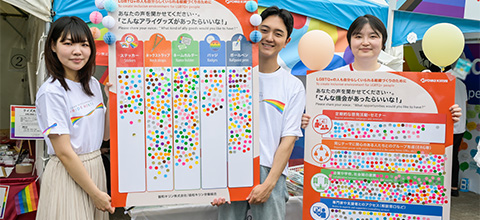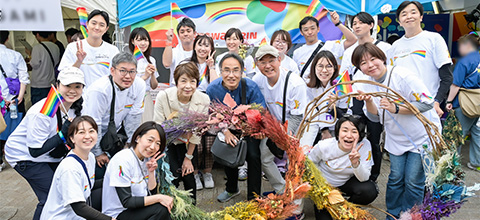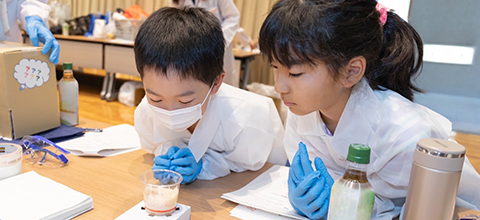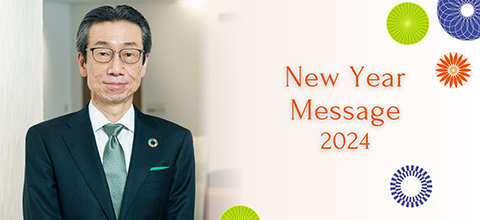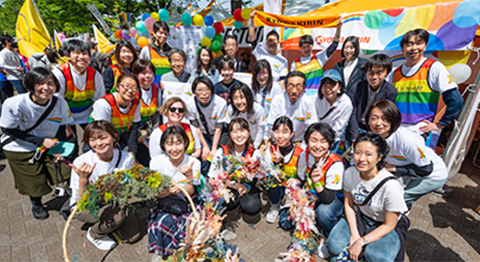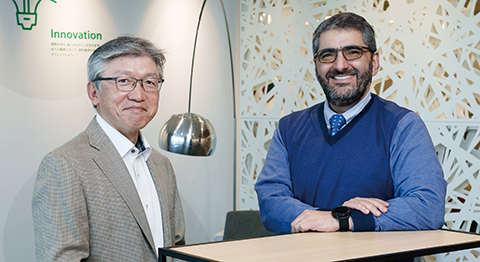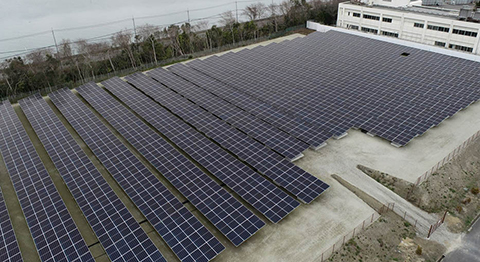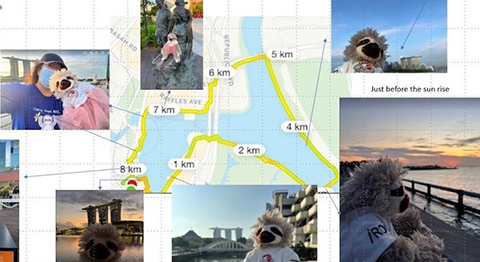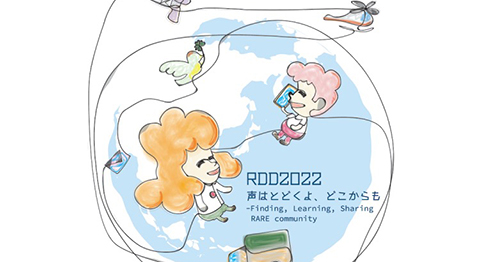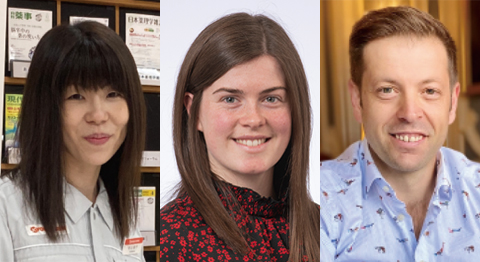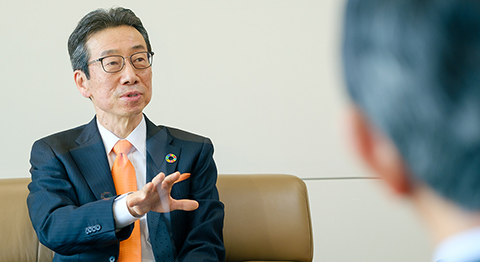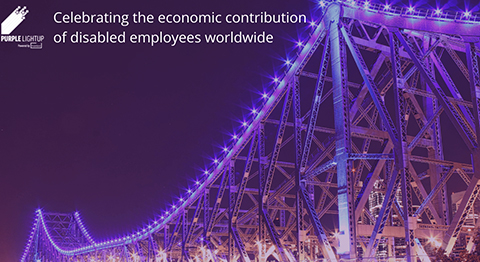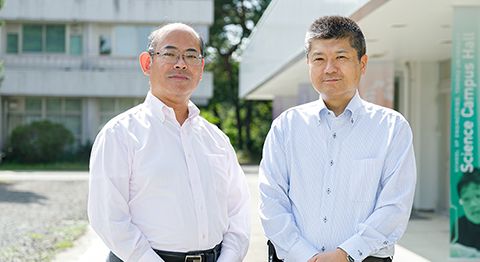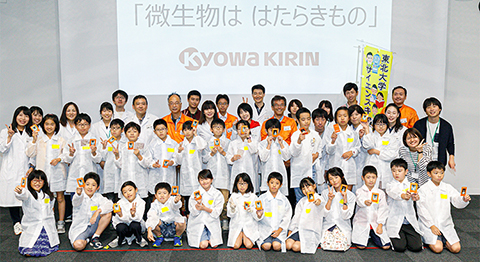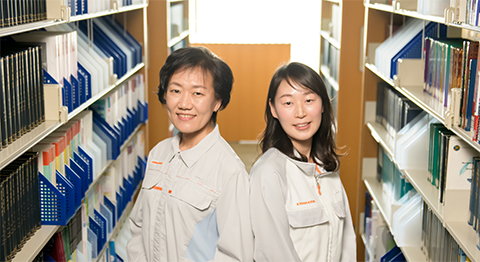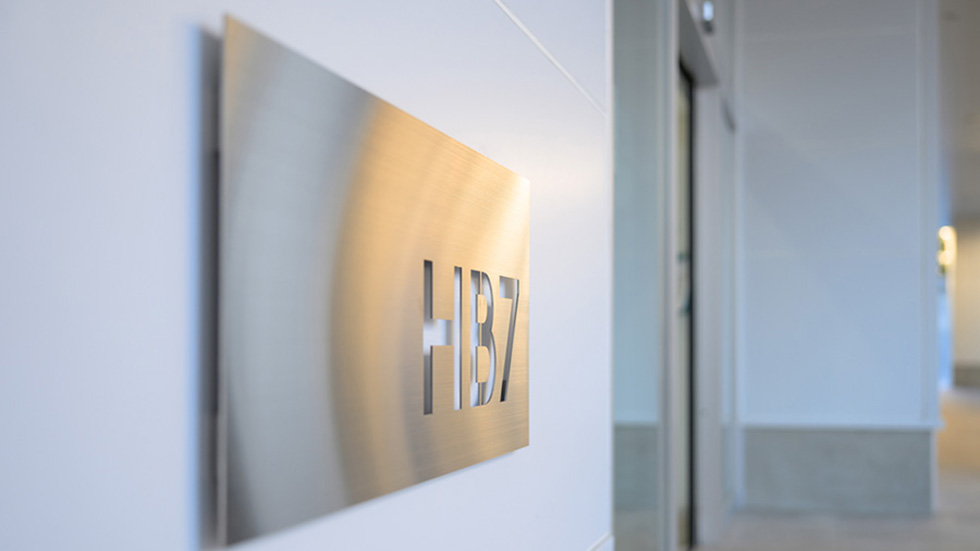
Index
Kyowa Kirin held a completion ceremony to commemorate the new HB7 building at the Takasaki Plant on February 26, 2025.
The Takasaki Plant has served as Kyowa Kirin’s primary site for biopharmaceutical production since the 1980s. The HB7 building is designated for the production of drug substances that serve as active ingredients in biopharmaceuticals. In collaboration with the new plant in Sanford, a biologics manufacturing facility currently under construction by Kyowa Kirin in Sanford, North Carolina, U.S., the Takasaki Plant will accelerate its development efforts to deliver novel pharmaceuticals to patients even more quickly.
In addition, the HB7 building houses a training facility with manufacturing equipment to nurture future engineers. The complex production processes of biopharmaceuticals have contributed to a shortage of skilled professionals in Japan. Kyowa Kirin aims to develop outstanding talent to lead future biopharmaceutical production by focusing on GMP (standards for manufacturing management and quality management) education and establishing a systematic human resource development program at the Takasaki Plant (click here for details).
A commemorative presentation was held following the HB7 building completion ceremony and a facility tour. This report will present the content of the presentation in two parts. The first part of this report will cover a speech given by Mr. Naritaka Nakaishi, Director-General of the National Healthcare Policy Secretariat, Cabinet Office, Government of Japan (at the time) followed by a panel discussion about uniting talent at the Takasaki Plant and the new plant in Sanford.
Delivering Japan’s biopharmaceuticals globally: Public and private sector initiatives in human resource development
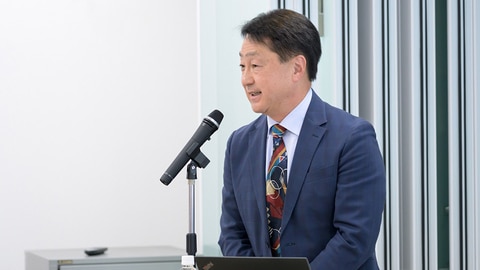
First, Mr. Naritaka Nakaishi, Director-General of the National Healthcare Policy Secretariat , Cabinet Office, Government of Japan (at the time), gave a speech on biopharmaceutical production in Japan and around the world, along with the current development of human resources in the field.
Global sales of biopharmaceuticals are on the rise. There are high expectations for biopharmaceuticals in Japan as well, with 226 approved products, half of which are antibody drugs. That said, pharmaceutical firms based outside Japan were prominent among the companies with biopharmaceutical approvals in 2024 in Japan.
“There is no doubt that the biopharmaceutical market in Japan is growing. While pharmaceutical companies based outside Japan are making great strides, biopharmaceuticals produced by Japanese companies have likewise made significant contributions.”
When it comes to production volume, domestic output in Japan is increasing, but production outside Japan is growing at a faster pace. Nakaishi-san stated, “From an industrial policy perspective, I hope domestic production will continue to grow.” He aims to strengthen domestic production and initiate exports to global markets.
In December 2024, the Japanese government released a comprehensive policy package designed to strengthen drug discovery capabilities and stabilize the supply of medication, including generic drugs. With a business scale of approximately 100 billion yen, this initiative aims to strengthen drug discovery while supporting production and supply chains.
Furthermore, the Cabinet approved Healthcare Policy Phase III in February 2025, which aims to encourage companies outside Japan to participate in Japan’s market and establish an ecosystem where companies and organizations mutually influence one another. A public-private council will be established to facilitate discussions among domestic and international pharmaceutical companies, investors, startups, and representatives from government agencies to improve the drug discovery environment in Japan.
A key element in strengthening drug discovery capabilities in Japan is human resources. The shortage of skilled personnel is not limited to the pharmaceutical production industry but is a common challenge across many corporations in Japan. Therefore, such organizations need to increase their efforts in talent development.
The government is implementing measures to nurture biopharmaceutical engineers. By clarifying the skills required of experienced biopharmaceutical professionals, programs are being developed that provide on-the-job training using the existing production facilities of pharmaceutical companies to enhance these specialists’ capabilities.
“The government is supporting the development of biopharmaceutical engineers, but strong commitment from the private sector is also crucial. My hope is that pharmaceutical companies continue to work diligently to establish themselves as a core industry in Japan. For this reason, I was deeply impressed by Kyowa Kirin’s human resource development initiative.”
In the end, Nakaishi-san gave us a word of encouragement.
“It is important for a company to identify the types of human resources it requires and to nurture that talent accordingly. By repeating this cycle of planning and developing over the next few years, Japan can build a strong national foundation of human capital, ultimately reinforcing the country’s production base. Human resource development should be pursued in collaboration with other companies in the industry, rather than in competition. I hope you will continue these efforts to advance through partnerships with other private-sector organizations.”
Delivering life-changing value to patients faster: Uniting talent at the Takasaki Plant and the new plant in Sanford

The following panel discussion featured three panelists:
- Chaz Calitri, Vice President, Site Leader North American Manufacturing
- Toshiyuki Kurata, Chief Supply Chain Officer
- Jun Hamamura, Head of Drug Substance Department, Takasaki Plant, Manufacturing Division
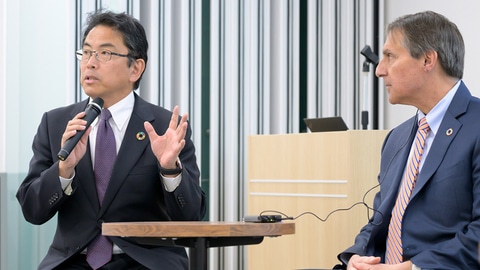
Kurata first explained the roles of the Takasaki Plant and the new plant currently under construction in Sanford. Both facilities are equipped with highly similar manufacturing equipment, enabling seamless technology transfer from development to market launch. The new HB7 building at the Takasaki Plant will supply investigational drugs in the early stages of the pipeline to enable earlier initiation of clinical trials. Subsequent late-stage development and production will be carried out at the plant in Sanford, with commercialization on the horizon.
Both plants declare five common goals:
- 1.Contribute to future profits through accelerated development.
- 2.Acquire and advance production technologies that offer a competitive edge by leveraging global expertise and talent.
- 3.Ensure a stable supply by moving away from a Japan-centric production system.
- 4.Address the challenges of securing skilled production talent in Japan.
- 5.Apply and enhance capabilities to support the development of new modalities (fundamental technology for drug discovery).
Kurata expressed his hope to accelerate pharmaceutical development and continuously deliver life-changing value to patients by leveraging shared expertise and technology.
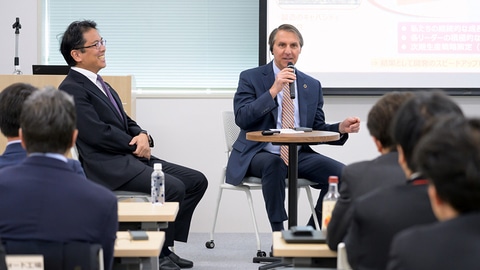
Following Kurata's remarks, Chaz continued:
“Since the plant in Sanford and the HB7 building are equipped with similar facilities, technology transfer can be carried out smoothly. Both will grow through collaboration, ultimately benefiting patients.”
Hamamura shared his expectations for technological advancement through mutual collaboration and encouragement, as construction progresses at the plant in Sanford. He stated, “The Takasaki Plant must become the industry’s plant of choice.”
When Kurata asked about thoughts on human resource development, Hamamura responded, “The key to speeding up development is technology transfer. The various systems and philosophies between the Takasaki Plant and the plant in Sanford need to align before true acceleration of development can be achieved. To make this possible, I believe fostering interaction among personnel across all divisions is essential, not just production and development. Creating opportunities for staff to visit and tour each other’s plants will help facilitate this.”
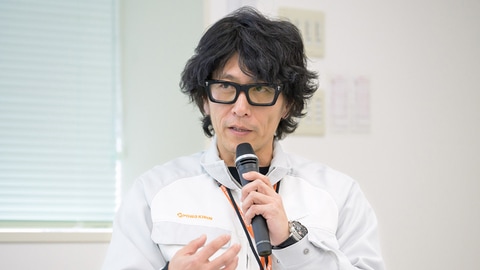
Chaz shared plans to transfer staff, implement short-term assignment programs between the plants, and offer educational opportunities for students to experience the actual facilities at the plant in Sanford.
With greater staff interaction expected, Kurata addressed employees at both plants, saying, “Many people will be visiting your plant, so please welcome them with a warm and positive spirit.” He continued, “I’d love to hear your thoughts on how we can share knowledge about managing the processes from sourcing to delivery.”
Hamamura expressed his eagerness to address the issue: “Experienced professionals from diverse backgrounds are gathered at both plants. I want to identify and bridge the gaps between the two through increased interaction.” Chaz suggested, “Investment in ICT is essential. A shared system will enhance operational efficiency on a global scale.”
Kurata concluded the fruitful panel discussion by emphasizing, “Everyone at the Takasaki Plant and the plant in Sanford needs to put their heads together and continuously strive for improvement. I want all of you to take ownership of this mission.”
The second part of this report will cover Mr. Takeshi Shukunobe's speech and the subsequent dialogue. Shukunobe-san is the CEO of PPeCC,Inc. , an association dedicated to creating a society where people with illnesses can live with peace of mind.

